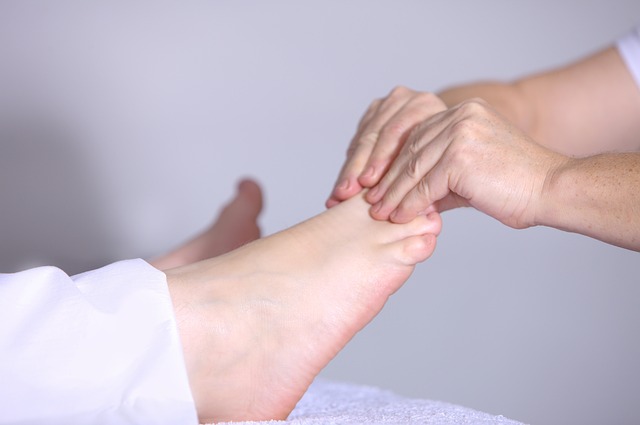
Physical therapy is a type of healthcare that helps people with physical disabilities regain their ability to move and function as they did before their injury or illness. The non-invasive therapy helps patients by providing exercises and treatment to restore movement, flexibility, strength, and balance. This medical branch of treatment also known as physiotherapy can be used to treat a variety of conditions, including arthritis, carpal tunnel syndrome, cerebral palsy, and spinal cord injuries.
Popular Techniques of Physical Therapy
Many different techniques are used in physical therapy, and the therapist will choose the most appropriate approach based on the individual patient’s needs.
- Manual therapy relies on the therapist’s hands to help move the injured body part. It mainly includes kneading and manipulation of muscles, joint mobilization and joint manipulation.
- TENS therapy : Transcutaneous electrical nerve stimulation (TENS) is a type of therapy that uses low-voltage electrical currents through electrodes placed on the skin to treat pain. TENS therapy is sometimes used to relieve chronic pain, such as backache, arthritis, and fibromyalgia. TENS therapy can also be used to help reduce anxiety or stress.
- Magnetic therapy: It is a noninvasive treatment option that has been used in physical therapy to improve the function of muscles and joints. Magnetic fields interact with the body’s natural magnetic field, which can help to improve muscle function and joint mobility. Magnetic therapy has been shown to be effective in treating conditions such as chronic pain, stiffness, and mobility issues.
- Dry needling/Acupuncture: Dry needling is a type of acupuncture that uses very thin needles to stimulate acupuncture points without the use of any oil or water. This technique is used to treat pain and inflammation, and has been found to be effective in treating conditions such as sports injuries, carpal tunnel syndrome, and chronic pain. Acupuncture is also used as part of physical therapy treatment for people who are recovering from surgery or injury.
- Taping: Physical therapists often use tape to help patients with movement. Tape is a versatile tool that can be used for a variety of purposes, including improving range of motion and reducing pain.
- Hydrotherapy : It is a form of physical therapy that uses water to provide relief from pain or injury. The benefits of hydrotherapy include reducing inflammation, improving joint function, and providing stress relief. It can be used in both acute and chronic conditions.
- Rehabilitation Robotics: Robotics physical therapy is a new form of rehabilitation therapy that uses robotics to help patients recover from injuries. The robots help the patients by creating natural movements that they can use to rehab their injury. The patients also have the option of using the robots to locomote and perform other exercises.
Effectiveness of physical therapy
Physio therapy is widely considered to be an effective treatment for a variety of physical ailments. However, the effectiveness of physiotherapy is still under debate. Some researchers believe that physiotherapy is very effective in treating various conditions, while others suggest that the benefits are more modest. Overall, evidence suggests that physical therapy can provide considerable relief from common symptoms, but more conclusive evidence is needed to confirm its full potential.
Benefits of Physical Therapy
- Pain Reduction and Relief: Physical therapy is an often-effective treatment for people with chronic pain. It can help improve range of motion, exercise tolerance, and strength. Physical therapists often use exercises and stretches to help reduce pain and inflammation which is a provider of comprehensive solutions for chronic pain. It can also help people learn how to manage their pain effectively on their own.
- Reduce chances of surgery: Physical therapy and surgery prevention has long been a focus in the field of physical therapy. The goal of prevention is to reduce the risk of developing problems that may require surgery. One way to do this is by identifying early signs and symptoms of problems and referring patients to the appropriate resources. Additionally, physical therapists can work with patients to improve their overall lifestyle habits, which may help reduce the likelihood of developing health issues in the future. By working together, physical therapists and surgeons can help prevent many common injuries from occurring.
- Mobility Enhancement: Physical therapy can be an extremely beneficial tool for enhancing mobility. By correcting movement deficiencies and teaching patients how to properly use their muscles, physical therapy can help people with a wide range of injuries regain their pre-injury level of mobility. In addition, physical therapy can be used to prevent future injury from developing in the first place.
- Improves recovery after stroke: Physical therapy enhances recovery after stroke by helping patients regain movement and function. Physical therapy can help improve balance, coordination, and strength, which can help patients regain their independence. Additionally, physical therapy may help reduce the risk of re-stroke or other disabilities.
- Aids in Fall Prevention : With regular physical therapy, you can improve your balance and prevent falls. Activities such as balancing on one foot, walking heel-to-toe, and hopping can help to improve your stability and coordination. Physical therapy can also help to increase your strength in your core muscles.
- Cardiac rehabilitation : Physical therapy can help people with heart problems improve their strength, flexibility, and mobility. Cardiac rehabilitation can help people with heart problems learn how to maintain their health and reduce the risk of future heart issues.
- Joint Replacement : Physical therapy can help in the rehabilitation process after joint replacement surgery. Physical therapists help patients restore movement and function to their joints by teaching them proper exercise and rehabilitation techniques. Patients may also receive medication prescribed by their doctor to speed up the healing process.
- Diabetes care : Physical therapists are seeing an increase in patients with blood sugar problems. This is likely because physical therapy can help improve the overall health of people with diabetes by helping to control blood sugar levels and alleviate symptoms. In addition, physical therapy can help people with diabetes maintain their mobility and quality of life.
When to stop physical therapy ?
There are a few factors to consider when deciding whether to stop physical therapy. The patient’s progress, the therapist’s availability, and the cost of therapy should all be considered.
Some patients may only require a few sessions of physical therapy before they start seeing benefits. If a patient does not see any improvement after six weeks or more of therapy, it may be time to find another therapist. If physical therapy is becoming too costly or inconvenient, it may also be time to discontinue treatment.
No Progress with the condition
Physical therapy should typically be continued until the patient reaches their treatment objective or until the patient and therapist determine that the patient’s condition has gotten so bad that the patient’s goals need to be reevaluated. Your course of PT may last about 6 to 8 weeks since soft tissue typically takes 6 to 8 weeks to heal.
Goal Completion
It’s time to move on once you and your therapist are satisfied with your progress toward the goals you set at the start of your programme. Among the common goals of therapy are less pain, better sleep, improved communication, less stress, and increased happiness.
Pain Beyond Discomfort
You should schedule an appointment with your physical therapist if you experience pain that is greater than just soreness or discomfort so they can help you identify the source of the pain. Your therapist will talk with you about your pain management options and modify your therapy as necessary.

Lifebing is driven by an unrelenting passion for promoting health and well-being, our team is wholly committed to curating exceptional content and immersive experiences.
